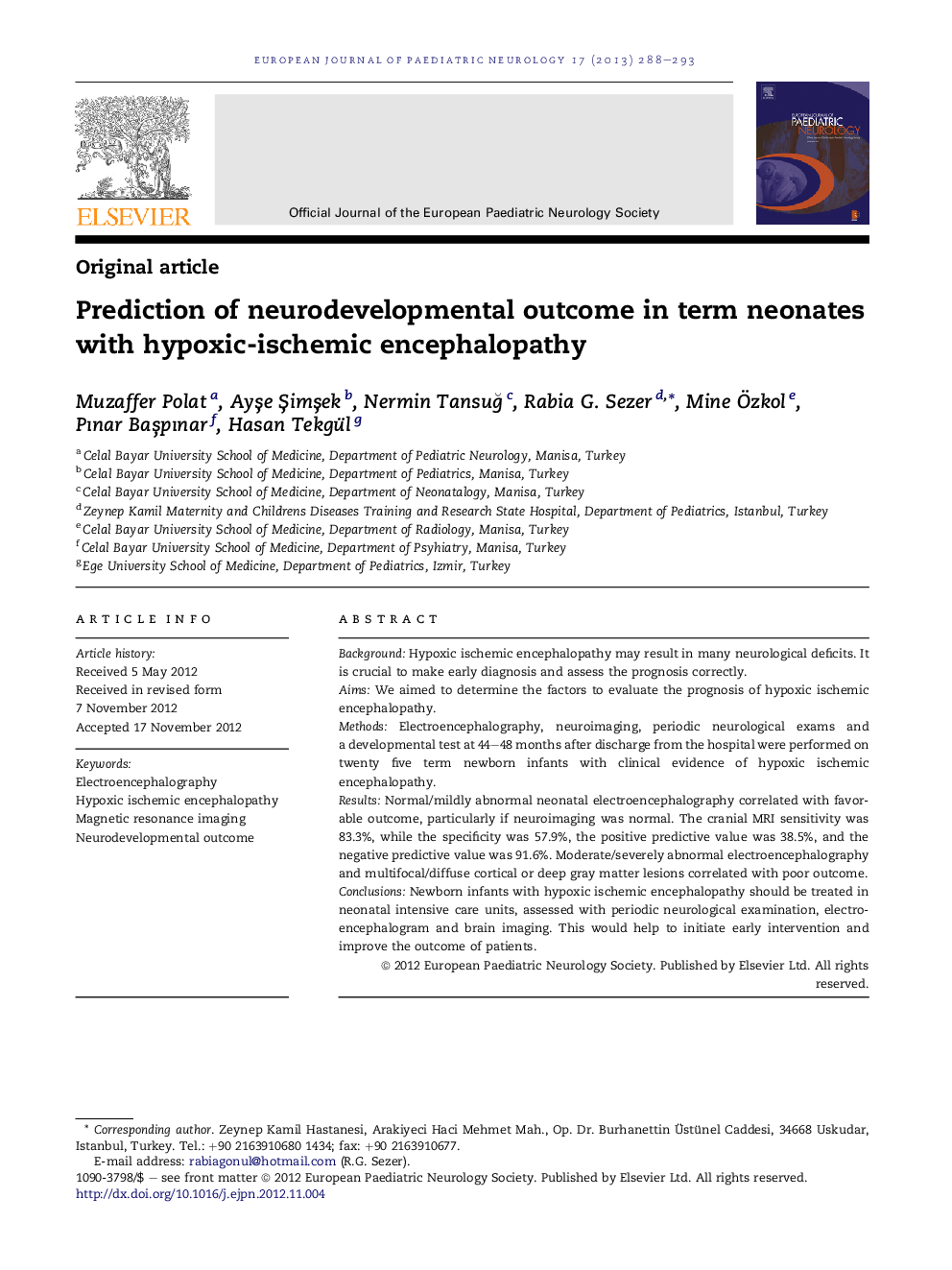| Article ID | Journal | Published Year | Pages | File Type |
|---|---|---|---|---|
| 3054136 | European Journal of Paediatric Neurology | 2013 | 6 Pages |
BackgroundHypoxic ischemic encephalopathy may result in many neurological deficits. It is crucial to make early diagnosis and assess the prognosis correctly.AimsWe aimed to determine the factors to evaluate the prognosis of hypoxic ischemic encephalopathy.MethodsElectroencephalography, neuroimaging, periodic neurological exams and a developmental test at 44–48 months after discharge from the hospital were performed on twenty five term newborn infants with clinical evidence of hypoxic ischemic encephalopathy.ResultsNormal/mildly abnormal neonatal electroencephalography correlated with favorable outcome, particularly if neuroimaging was normal. The cranial MRI sensitivity was 83.3%, while the specificity was 57.9%, the positive predictive value was 38.5%, and the negative predictive value was 91.6%. Moderate/severely abnormal electroencephalography and multifocal/diffuse cortical or deep gray matter lesions correlated with poor outcome.ConclusionsNewborn infants with hypoxic ischemic encephalopathy should be treated in neonatal intensive care units, assessed with periodic neurological examination, electroencephalogram and brain imaging. This would help to initiate early intervention and improve the outcome of patients.
